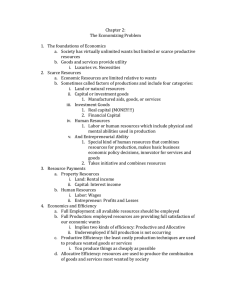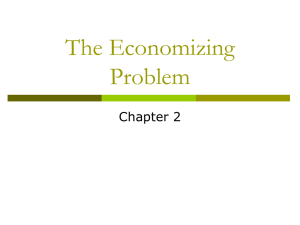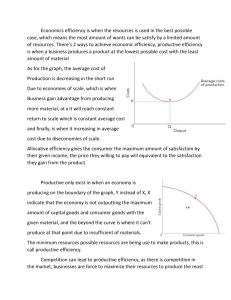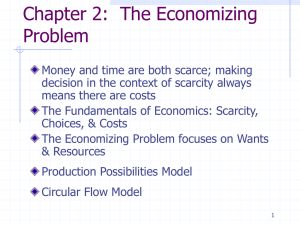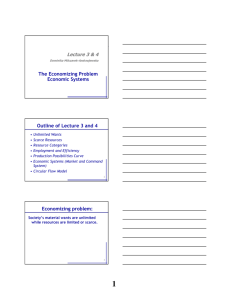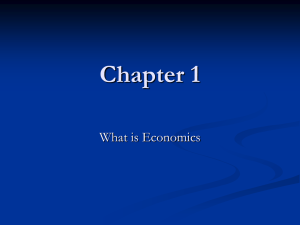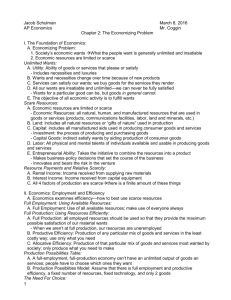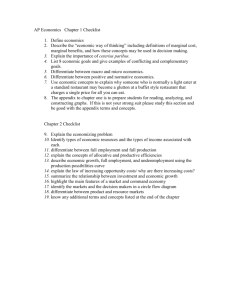AP Macroeconomics Chapter 2 The Economizing Problem
advertisement
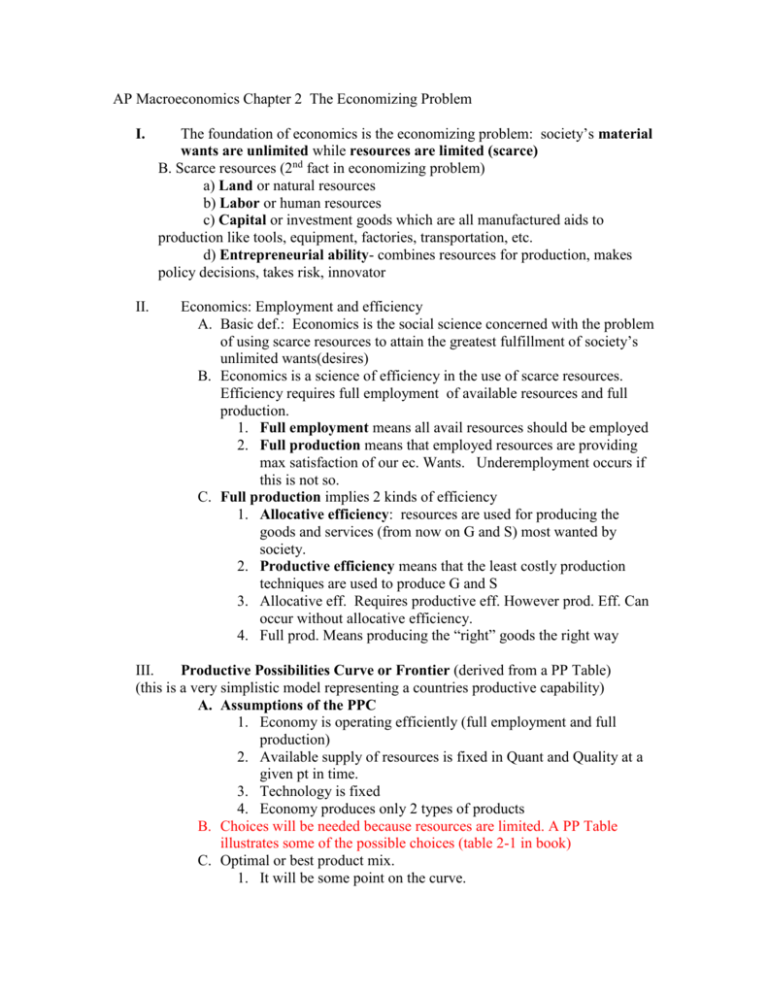
AP Macroeconomics Chapter 2 The Economizing Problem I. The foundation of economics is the economizing problem: society’s material wants are unlimited while resources are limited (scarce) B. Scarce resources (2nd fact in economizing problem) a) Land or natural resources b) Labor or human resources c) Capital or investment goods which are all manufactured aids to production like tools, equipment, factories, transportation, etc. d) Entrepreneurial ability- combines resources for production, makes policy decisions, takes risk, innovator II. Economics: Employment and efficiency A. Basic def.: Economics is the social science concerned with the problem of using scarce resources to attain the greatest fulfillment of society’s unlimited wants(desires) B. Economics is a science of efficiency in the use of scarce resources. Efficiency requires full employment of available resources and full production. 1. Full employment means all avail resources should be employed 2. Full production means that employed resources are providing max satisfaction of our ec. Wants. Underemployment occurs if this is not so. C. Full production implies 2 kinds of efficiency 1. Allocative efficiency: resources are used for producing the goods and services (from now on G and S) most wanted by society. 2. Productive efficiency means that the least costly production techniques are used to produce G and S 3. Allocative eff. Requires productive eff. However prod. Eff. Can occur without allocative efficiency. 4. Full prod. Means producing the “right” goods the right way III. Productive Possibilities Curve or Frontier (derived from a PP Table) (this is a very simplistic model representing a countries productive capability) A. Assumptions of the PPC 1. Economy is operating efficiently (full employment and full production) 2. Available supply of resources is fixed in Quant and Quality at a given pt in time. 3. Technology is fixed 4. Economy produces only 2 types of products B. Choices will be needed because resources are limited. A PP Table illustrates some of the possible choices (table 2-1 in book) C. Optimal or best product mix. 1. It will be some point on the curve. IV. 2. the exact point depends on society, it is a normative decision D. Law of Increasing opportunity costs 1. The amount of one product that must be given up to get more of the other product is called the opportunity cost. 2. Opp costs are in real terms not money (ie number of robots) 3. The more of a product that is produced, the greater the marginal opportunity cost. 4. The slope of the PPC becomes steeper, illustrating increasing opp cost. This makes the curve look bowed out concave from the origin. E. Reason: 1. Ec. Resources are not completely adaptable to other uses F. Important facts to memorize 1. One cant move beyond the curve without the following 1. International trade 2. Improvements in Tech 3. More/better natural resources 4. over time producing capital goods 2. Inside the curve in called inefficient, this is because there are resources not being used. (ex- unemployment) Economic systems differ in 2 ways- who owns the factors of production and the method used to coordinate ec. Activity. A. Market system: 1. Private ownership of resources 2. Mkts and prices coordinate and direct ec. Activity. 3. Each participant acts in his or her own self-interest. 4. In pure capitalism the govt plays a very limited role. B. Command Economy: socialism or communism 1. There is public (state)ownership of resources 2. ec activity is coordinated by central planning C. Mixed- (college)- combination of the 2 systems. In actuality, most “capitalist” systems fall in this category.
